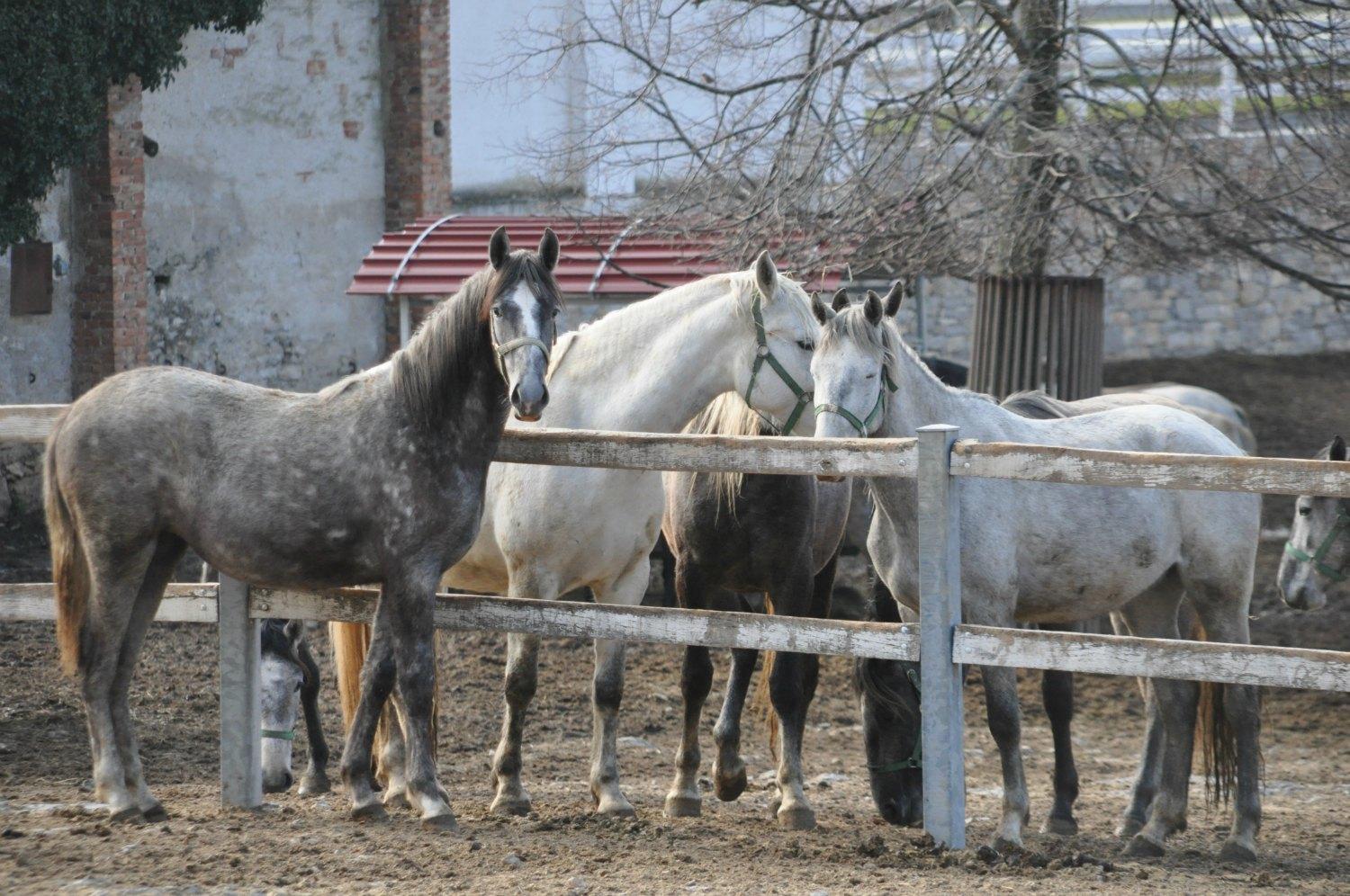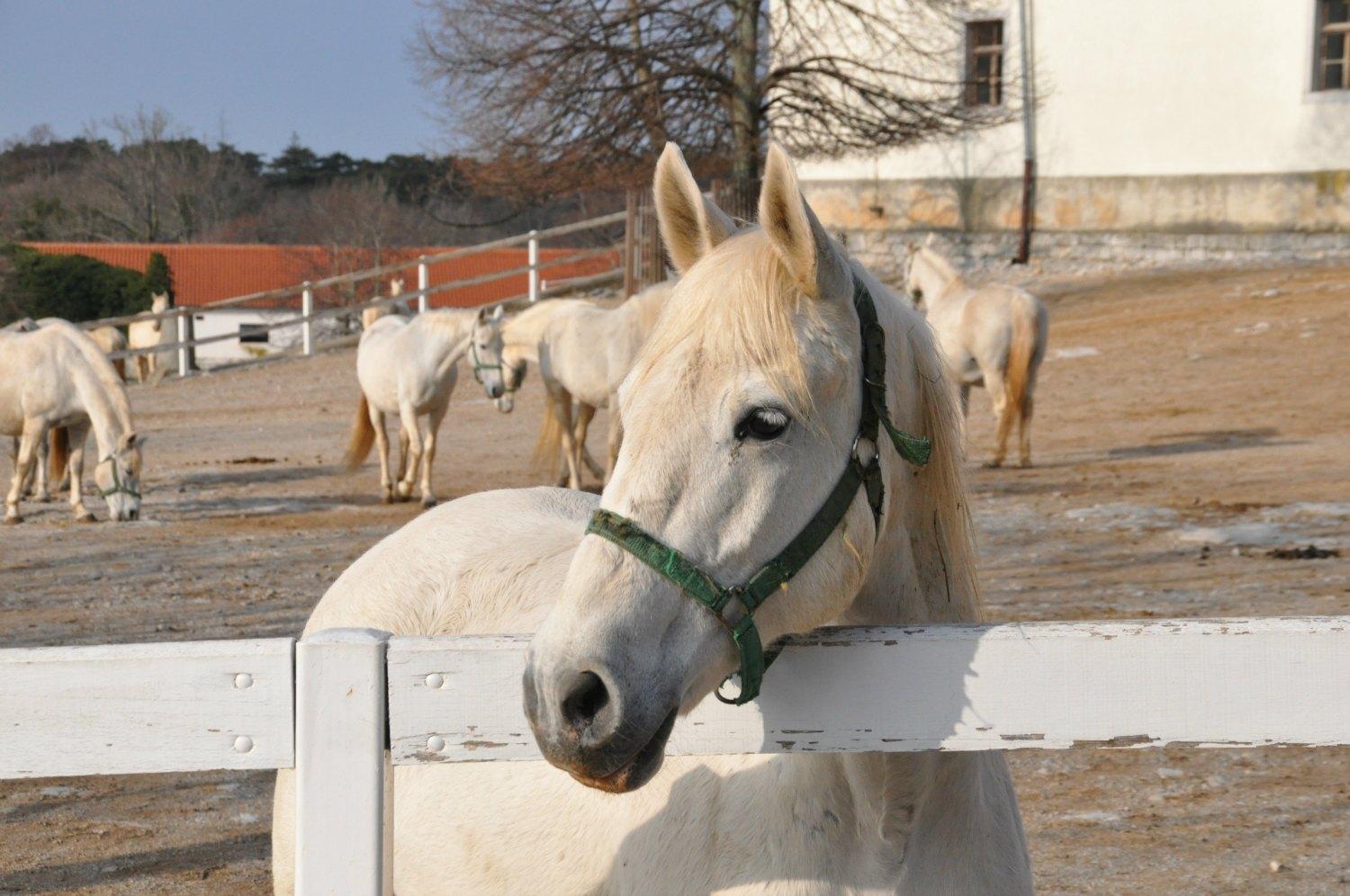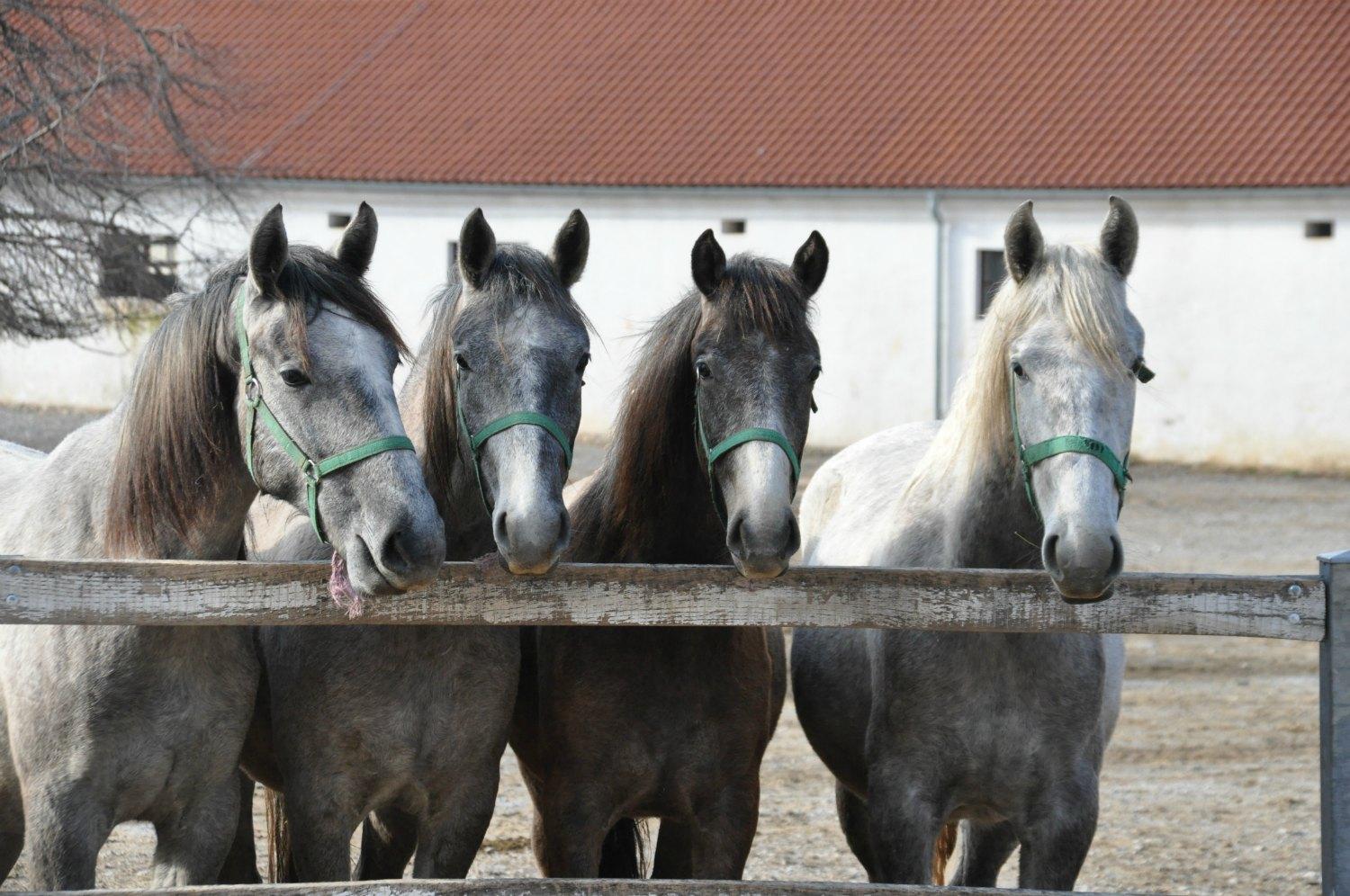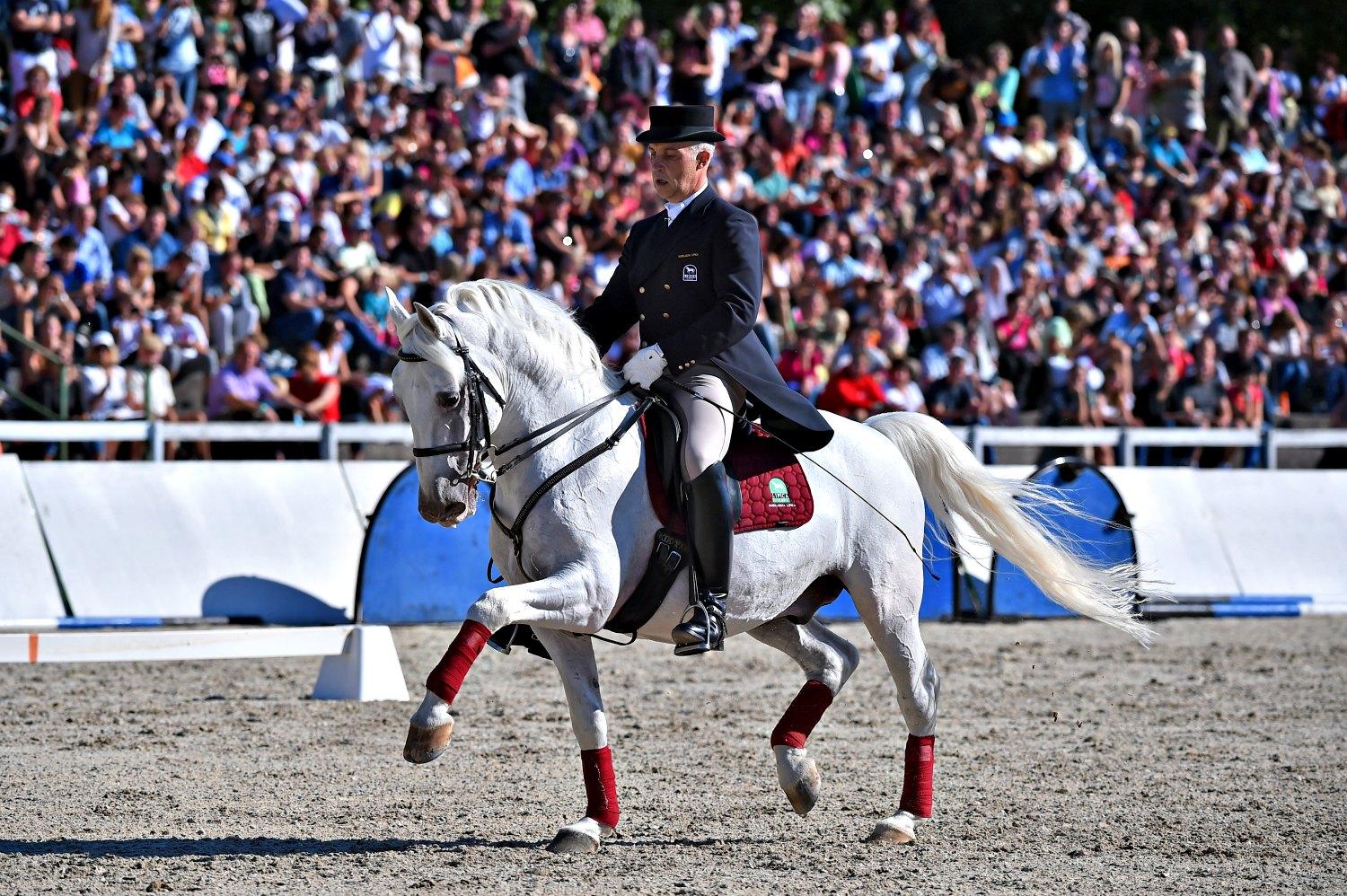The Lipizzaner stallions of Slovenia gave me hope that even the most headstrong and high-strung of creatures can acquire grace under pressure.
On an early April day, I visited Lipica Stud Farm in southwestern Slovenia, along the Italian border. While I am not an equestrian—or even a horse aficionado--one sleepless night months earlier I had chanced upon a documentary about Lipizzaner stallions and was enchanted. An insomniac who often lulls me to sleep with nature programs, the film instead mesmerized me for an hour with astonishing performances by majestic white horses that resembled unicorns minus the horns. The magic lay in the delicate, nuanced movements of the massive, muscled beasts, maneuvers that seemed to defy gravity. When invited to see the Lipizzaners in person while in Slovenia, I jumped at the chance.
Turning into the Lipica estate, I drove down a long lane lined with full, leafy trees. The stud farm’s name and that of the town it is located in are derived from the Slovenian word lipa, which means 'linden tree,” a national symbol of Slovenia. Lipica Stud Farm’s staff plants a new linden tree for every Lipizzaner foal born.
The Lipizzaner stallion is also considered an emblem of Slovenian identity a pair of the horses is featured on the 20-cent Slovenian euro coins. In a 1996 law, Lipica Stud Farm was declared a cultural monument of outstanding importance for the Republic of Slovenia. With a tradition of over 400 years, it is the oldest stud farm in the world, breeding horses without interruption since its establishment. Lipica Stud Farm is government-owned, providing special protection to not only the herd of Lipizzaner stallions but also to the estate’s architectural heritage and the surrounding landscape. Lipica is part of the Karst Plateau, a region of limestone famous for its caves and underground rivers.
During the day I spent at Lipica Stud Farm, I learned that the Lipizzaners’ spirit and sensitivity are what make them so beloved and extraordinary at their work. After my visit, I was able to navigate a few high hurdles thanks to life lessons from the lovely Lipizzaner stallions.
An Introduction to the Lipizzaner Stallion
Lipizzaner stallions are a rare breed of horse with a highly selective pedigree; their lineage can be traced back 2,000 years ago to Carthage and the bloodline includes Pyrenees, Arab and Andalusian strains. Lipizzaner stallions are renowned as powerful and agile and these traits made them prized for centuries by cavalry commanders in warfare, as well as among European nobility in the leisure pursuit of dressage riding.
The history of Lipica stud farm is closely intertwined with the Habsburgs who ruled for as many as 650 years over an extensive part of baroque Europe. Lipica Stud Farm was established in 1580 by Habsburg Archduke Charles II, son of the Habsburg Emperor Ferdinand I. The Hapsburgs founded the Spanish Riding School as a royal training program for classical horsemanship, an endeavor that had become popular in that era. It is referred to as Spanish because only horses from Spain were used at first, but they were soon replaced by Lipizzaner horses from the Lipica Stud Farm.
The study of classical horsemanship is known as dressage and was created in 400 B.C. by Xenophon, a Greek historian, and military leader.
Harmony at Home
The ancient art is based entirely on the principle of harmony between the horse and its rider. In Xenophon’s words: "If one induces the horse to assume that carriage which it would adopt of its own accord when displaying its beauty, then one directs the horse to appear joyous and magnificent, proud and remarkable for having been ridden."
That natural exuberance was on full display as I approached the paddock where a herd of foals frolicked with abandon. My guide Tina Čič explained Lipica’s Stud Farm’s philosophy on raising happy healthy horses.
"Young horses both colts and fillies are allowed to just "be" for the first three and a half years of their life before they begin training," Tina said. "During these years, they are allowed to play, fight, and develop their spirit and character."
The Life of a Lipizzaner Stallion
"The first year of their life, foals stay together in the herd with their mothers," she explained. "They all live together in the historic stable complex "na Borjači", which has remained practically the same since it was built in the middle of the 19th Century. This is an "active stable" - instead of being kept in boxes, horses are allowed to move around freely and socialize with other horses. This is closer to a horse's natural lifestyle. It also promotes learning to live together and interact with each other as a community."
"At the age of one-year colts are separated from the fillies and brought to "Ravne" - a separate unit of the Lipica Stud Farm, where they live in the herd and stay until the age of three and a half years," Tina continued. "Fillies stay in Lipica. In the warmer part of the year, they spend their days in the pastures and return to the stables in the evening. In winter they can move in the paddocks in front of their stables."
Tina and I walked across the Farm's grounds to the riding hall.
I asked Tina how long she had been affiliated with Stud Farm and she told me she had started to ride in the Lipica Riding Club when she was 16 years old.
"It was a possibility for local people, teenagers to learn the basic lessons for a very reasonable price and also a nice social point," Tina recalled. "Through the years I have had my ups and downs, but the connection to the Lipica Stud Farm was established and hasn't changed since then. I decided to study journalism because wanted a varied lifestyle that could keep my mind fresh, without closing up into one single field. But after my studies, I bought my own Lipizzaner and kept both passions going, also writing for the Slovenian Equestrian Magazine. After more than 10 years as a journalist, I started to feel more and more drawn to Lipica and the transition to my job here happened with almost natural ease."
Lipizzaner Stallion, Sensitive, Disciplined and Docile
Entering the training and exhibition space, she explained we would need to keep our voices lowered and no photographs were allowed.
"Horses as a species are very sensitive," Tina said. "For thousands and thousands of years, they lived in the wilderness as a prey species and so it is in their nature to be very sensitive, to carefully observe what is happening in their environment and run away at any sign of danger."
"Being so sensitive, horses respond to very delicate movements by trainers," she pointed out. " It is necessary for trainers to have discipline and character in order for them to pass these traits on to the horses they are working with. "
Aiding With Ease
Inside the riding hall, we sat on bleachers overlooking the ring, in which a half-dozen Lipizzaner stallions and their riders practiced different movements. Two senior trainers stood in the center of the sand-covered hall observing the equestrian duos, striding between the different pairs of horse and rider to offer constructive criticism.
"Classical Dressage respects the natural characteristics of a horse both physical and psychological– to achieve happy, balanced, beautiful, unstressed horses moving in total harmony with their rider," Tina whispered. "The goal is for the rider's instructions, known as "aids" in the world of dressage, to look effortless and invisible. For a rider or trainer, it takes years to master the correct posture and technical knowledge, which is passed on orally, from an older to a younger generation of riders."
Riders are Required to Stay Calm But Stern
On the right of the hall, a horse with its rider astride was led around in a circle by a senior trainer with the use of a long rein. The horse tossed his head back and forth a few times and Tina told me he was a young Lipizzaner, who was only beginning to learn the ropes of dressage.
"The work of a dressage rider is beautiful, but can also be very demanding, from the physical and psychological point of view," she observed. “It takes an emotionally stable character for a rider to be able to stay calm, focused, and present in all the different types of occasions that happen daily when working with animals. In such situations, good technical knowledge and stability of a rider's character are the most precious tools."
"Most of the time, the Lipizzaner stallion is trying to do what they are being trained to do, but it usually takes years for horses to master the complex movements involved in dressage," Tina said. "Trainers must have a lot of patience and not push a horse too hard, because a horse needs years of training to develop the balance and strength needed for the Haute Ecole dressage."
Rewarding a Lipizzaner Stallion Leads to Success
She noted that during this time a close relationship and bond of trust develops between a horse and a rider. To keep the horse motivated, trainers regularly reward the horse when it has performed well with a pat on the neck and some sugar. This approach echoes Xenophon's work "On Horsemanship", which emphasized training the horse through kindness and reward.
"Although a horse's movements look beautiful, the training requires intense concentration and a lot of strength from the horse," Tina explained. "This is especially true for the most difficult figures of the High School of Dressage, such as air above the ground, pirouettes, piaffe, and passage."
A rider atop his Lipizzaner horse pranced toward us, stopping right below our seats, where the horse engaged in a beautiful movement that appeared simultaneously highly disciplined and yet playful. In a maneuver akin to an optical illusion, the horse fluidly lifted its legs and seemed to march in place. Tina told me this was known as passage, which is aptly described as a 'cadenced trot on the spot.' After a few moments of this artistry, the trainer gave the horse an affectionate pat on its neck with a murmur of praise.
Across the hall, I watched a horse execute a remarkable move, breathing heavily.
Training for Dressage at Lipica Stud Farm
Tina explained that it takes a lot of strength and power for a horse to perform what is called 'airs above the ground' and High School Dressage. In the world of dressage, that ability is known as "collection," which means the horse is able to bear more weight on its hind legs. By nature, the horse supports about 60 % of its body weight on its forequarters; only 40 percent of its weight is supported by its hind legs. With correct training, a horse is able to support more weight with the hind legs.
She explained that the 'airs above the ground' and school jumps are a series of higher-level, Haute Ecole, classical dressage movements in which the horse leaves the ground or 'jumps.' In the capriole which means “leap of a goat”– the horse jumps from a raised position of the forequarters straight up into the air, kicks out with the hind legs, and lands more or less on all four legs at the same time. It requires an enormously powerful horse to perform correctly and is considered the most difficult of all the airs above the ground.
The pesade and levade are the first airs taught to the High School horse, and it is from these that all other airs are taught. In the pesade, the horse raises its forequarters off the ground and tucks the forelegs evenly, carrying all weight on the hindquarters, to form a 45-degree angle with the ground.
"When performing the levade we ask the horse to hold a position approximately 30-35 degrees from the ground," she explained. "Unlike the pesade, which is more of a test of balance, the decreased angle requires a greater effort from the horse."
Motivating a Lipizzaner Stallion
"Neither of these movements is equivalent to rearing, which is an act of resistance by a horse," Tina said. "Rather, the airs above the ground require precise control, excellent balance, and a great deal of strength, and are the product of correct training, rather than being a display of disobedience from the horse."
“The trainers are aware that if a horse is doing the same thing all the time, it becomes bored and loses its motivation,” Tina told me. "If learning new techniques, the horse stays inspired."
Walking, trotting and cantering are practiced during training, as well as elements of dressage, such as shoulder-in, pirouettes, piaffe and passage. Tina pointed out that the transitions between these figures are important, too.
"Transitions can also be a physically challenging part of the training for a horse, but they make the training varied and keep the horse's mind fresh, so they are positive," Tine said. "In fact, if we look at the transitions in our own lives from a distance, we can usually realize that they were a step forward and a time of growth – even if we didn't feel like that the time the transitions occurred."
Life Lessons From the Lipizzaner Stallion
Like the Lippizaner stallions, I am a sensitive soul. Alas, I cannot claim to respond well to subtle instructions from my divine Trainer. My mother used to say "God whispers before he shouts" and I am often in need of directions dictated via a megaphone.
But I do share with the Lippizaners an eagerness to be taught how to rein in my willfulness and respond with more grace to challenges that stretch my comfort zone. I do recognize that if I am capable of receiving the guidance available, I can perform at a higher level than my sometimes childish temperament allows.
As life situations of increasing complexity arise, collecting myself does indeed require a great deal of concentration and energy. I occasionally astonish myself with metaphysical airs above the ground. In those moments I too find that my innate spirit and trust in the Ultimate Instructor grows in leaps and bounds.
Will is to grace as the horse is to the rider - Saint Augustine, 354 - 430
More on Slovenia
- Ljubljana Architecture Contributes to the Beautiful Culture of Slovenia
- World Bee Day Inspired By Slovenia’s Devotion to the Carniolan Bee
- Painted Beehives, a Slovenian Tradition That Tells of Cultural Landscape
- Hisa Franko Restaurant Focuses on Risk and Re-Learning Traditions
- Slovenia’s Sticna Abbey Illuminates Country’s History
- Piran Slovenia’s Salty History Along the Adriatic Coastline
- Easter Baskets in Slovenia: At Tustanj Castle
Publisher and editor of People Are Culture (PAC). This article was created by original reporting that sourced expert commentary from local cultural standard-bearers. Those quoted provide cultural and historical context that is unique to their role in the community and to this article.












I saw the Lipizzaners in Vienna in 1972. I have read numerous books and articles on them. Their heritage is associated with Spain and the horses are bred and raised in Lipizza, Austria, and they bear brands of a P and an L on one hind thigh and on the cheek or jaw. Are the Polish Lipizzaners and the Austrian Lipizzaners from the same «stock»? In other words – hunh? I don’t understand the Polish affiliation.
Thanks for visiting and commenting Virgina! The Lipizzaners are indeed fascinating! You’ve got me on the Polish connection! Slovenia, on the other hand, was once part of Austria, which is the connection with the Lipica Stud farm.
My grandmother came from Austria when she was 13 years old. She told us stories about “the beautiful white horses that danced in the streets”. O.K., grandma, we thought she was embellishing. Then, when I was grown, and did some research, I found out she grew up near the farm where these magnificent horses were.
Hi Marian!
Thank you for sharing your personal connection with the Lipizzaners! That is so cool! Kudos to you that you remembered her stories and were inspired to investigate! Have you seen them yet? They are magnificent!